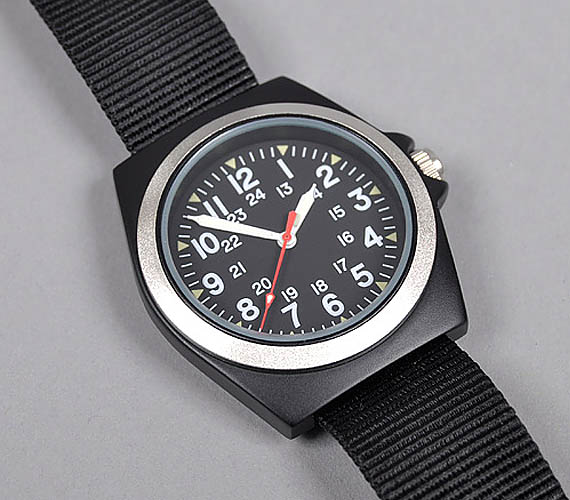In 1964, the US Army needed watches that fit the following specification. “Plastic-cased wrist watch intended for use where a high degree of accuracy is not required.” They were also intent on not maintenancing them in the military supply system. The Army wanted a cheap, disposable plastic watch that could be deployed by the thousands to troops. They probably never intended for them to end up desirable, but like everything else vintage they have. Kind of. MWC took the design skeleton of that original watch and updated it with 316L stainless and an accurate Quartz movement. What they didn’t do was screw with the sleek, simple design of the original. It’s old school meets new technology.
More Watches

Nixon’s Latest Watch Collection Bends, Freezes, and Wobbles Time
What happens when a watchmaker decides to take time into a new dimension?

Meet the California Brand Redefining the American Watch Movement
Vaer’s timepieces prove world-class craftsmanship doesn’t have to cost a fortune.

Are These the Most Underrated Watches of the Year?
Citizen’s newest luxury collections set a new bar for everyday excellence.

